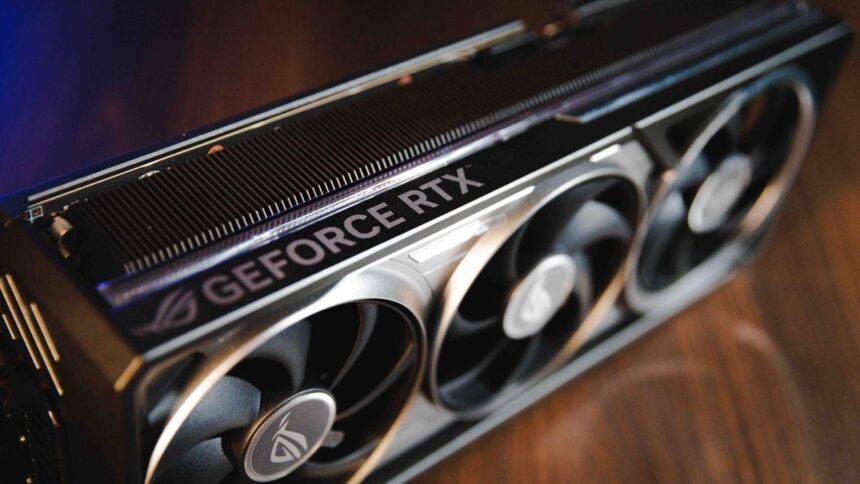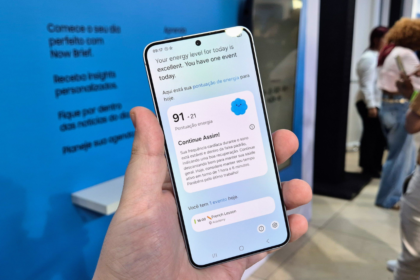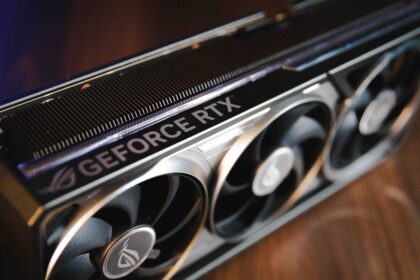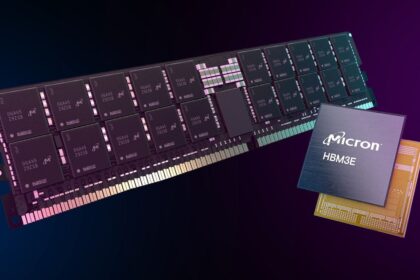Before the launch of the GeForce RTX 20 series, NVIDIA introduced the first generation of Tensor Cores back in 2017. Initially exclusive to professional GPUs, these AI-focused cores became widely available in September 2018 with the release of Turing-based GPUs.
This marked a major shift in NVIDIA’s GPU lineup, signaling the gradual phase-out of the GeForce GTX series. The RTX lineup introduced Tensor Cores for AI acceleration and dedicated Ray Tracing Cores, setting the stage for the next generation of graphics technology.
What are Tensor Cores, and how do they work?
In simple terms, Tensor Cores are specialized cores designed to accelerate AI processing and training for various machine-learning models. NVIDIA describes the technology as follows:
“Tensor Cores enable mixed-precision computing, dynamically adjusting calculations to accelerate performance while maintaining accuracy and improving efficiency.”
Supporting FP8, FP16, and TF32 precision, Tensor Cores can dramatically speed up AI training on models with trillions of parameters, reducing training time from months to significantly shorter periods, all while delivering more accurate results.
Tensor Cores are in their 5th generation with the Blackwell architecture, which debuted in high-performance data center GPUs and has now been integrated into the GeForce RTX 50 series. NVIDIA claims that Blackwell offers a 45X improvement in IMA (Integer Matrix Acceleration) compared to the previous Hopper generation.
Tensor Core Applications
This technology is aimed at AI, and there is no other use. However, within their abilities, several applications benefit from this acceleration.
Deep Learning
Tensor Cores play a crucial role in deep learning and complex neural networks, powering everything from high-performance servers to AI inference in language models. This technology is key to DLSS (NVIDIA’s AI-powered upscaling suite) and other AI-driven features that continuously improve through intensive machine learning training.
Beyond gaming, Tensor Cores also accelerate general AI applications. A practical example is text-based AI models like ChatGPT or image-generation tools like Microsoft’s Copilot. NVIDIA’s technology significantly boosts processing speed in these cases, making AI-driven applications more efficient and responsive.
Ray Tracing
While NVIDIA’s GPUs have dedicated Ray Tracing Cores, Tensor Cores also enhance ray tracing performance in specific scenarios. With the release of DLSS 3.7, NVIDIA introduced Ray Reconstruction, an AI-driven technology that enhances image quality when ray tracing is enabled.
This feature, along with upscaling and frame generation, continues to improve over time through AI advancements. Since these technologies rely on AI processing, Tensor Cores are essential for unlocking their full potential. Notably, Ray Reconstruction is available on all GeForce RTX GPUs, allowing a wide range of players to benefit from this cutting-edge enhancement.
DLSS
Nearly every feature in this AI-powered package relies on Tensor Cores, including upscaling, frame generation, Ray Reconstruction, and DLAA (AI-based anti-aliasing). The newer the Tensor Core generation, the better the performance in these tasks.
According to NVIDIA, these technologies—widely used by GeForce RTX GPU owners—have been continuously improved daily for the past six years. This ongoing enhancement is made possible by NVIDIA’s most advanced AI GPUs, which train and refine the neural network behind these cutting-edge features.
Nvidia video cards with colors tensor
As previously mentioned, NVIDIA offers a range of professional GPUs equipped with Tensor Cores. Below is a list of all GeForce RTX series GPUs featuring Tensor Core technology.
It’s also worth noting that mobile variants include these features as well. Some SKUs, like the RTX 2050 and RTX 4050, are exclusive to laptops.
| GPU Series | Architecture |
| GeForce RTX 20 | Turing 2nd generation Tensor Cores |
| GeForce RTX 30 | Ampere 3rd Generation Tensor Cores |
| GeForce RTX 40 | Ada Lovelace 4th generation Tensor Cores |
| GeForce RTX 50 | Blackwell 5th generation Tensor Cores |
Tensor Colors vs Cuda Colors: What are the differences?
CUDA Cores have been a part of NVIDIA GPUs since 2006, serving as the primary processors for general-purpose computing. These cores handle various tasks, from video editing to gaming, making them highly versatile. While CUDA Cores can also process AI workloads, they do so less efficiently than specialized hardware.
On the other hand, Tensor Cores—as previously discussed—are exclusively designed for AI inference and acceleration. They are fully optimized to deliver maximum efficiency and performance in AI-related tasks and have no other purpose beyond this.
NVIDIA’s biggest selling point in recent years has been the AI capabilities of Tensor Cores. This focus has become even more prominent in the GeForce RTX lineup, where AI-driven advancements define each new GPU generation.
A clear example is the RTX 50 series compared to the RTX 40 series. In raw power, the improvement is minimal, but the leap is significant when it comes to AI performance.
This is because NVIDIA has prioritized Tensor Core advancements with each new generation, leading to huge AI performance gains across various sectors—especially in data centers, its most important market. Through this strategy and continuous software optimizations, NVIDIA has become the most valuable company in the world across all industries.











